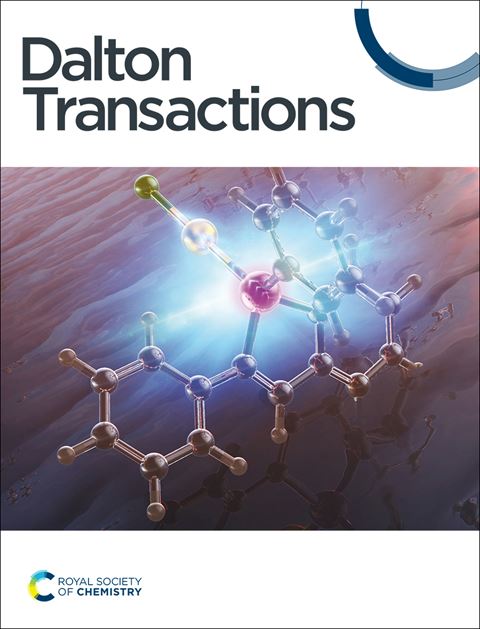Sn-modified Zr-UiO-66 metal-organic frameworks for dihydroxyacetone conversion into lactic acid
IF 3.5
3区 化学
Q2 CHEMISTRY, INORGANIC & NUCLEAR
引用次数: 0
Abstract
Dihydroxyacetone is a valuable waste-valorization compound, which is a main intermediate in lactic acid production from different recyclable sources. In the present work, the Sn incorporation into the Zr-based metal-organic framework is used to increase its acidity and facilitate dihydroxyacetone conversion to lactic acid through the minimization of side reactions. Three series of Sn-modified metal-organic frameworks with different synthetic conditions and Zr/Sn molar ratio are prepared and characterized by low-temperature nitrogen adsorption, XRD, XRF, TGA, FTIR of adsorbed CO, and NH3-TPD methods. The nature of the Sn species depends on both the Sn precursor and water amount in the liquid phase during the synthesis allowing the control of the SnClx hydrolysis. The Sn addition leads to an increase in the acidity of the MOF and mostly depends on the nature of the Sn species rather than the Sn loading. An insertion of the tin species directly inside the UiO-66 structure results in an almost quantitative yield of the target products. The material retains its structure after catalysis, but the deposition of the polycondensation products on the MOF surface slightly decreases the selectivity at consecutive runs.求助全文
约1分钟内获得全文
求助全文
来源期刊

Dalton Transactions
化学-无机化学与核化学
CiteScore
6.60
自引率
7.50%
发文量
1832
审稿时长
1.5 months
期刊介绍:
Dalton Transactions is a journal for all areas of inorganic chemistry, which encompasses the organometallic, bioinorganic and materials chemistry of the elements, with applications including synthesis, catalysis, energy conversion/storage, electrical devices and medicine. Dalton Transactions welcomes high-quality, original submissions in all of these areas and more, where the advancement of knowledge in inorganic chemistry is significant.
 求助内容:
求助内容: 应助结果提醒方式:
应助结果提醒方式:


